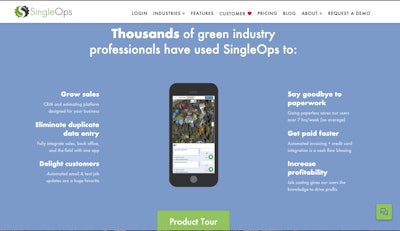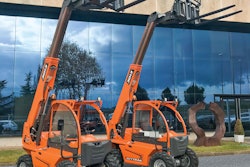
Software as a Service (SaaS) is a software distribution model where the product is available via the internet and the provider is responsible for the security, availability and performance of the service.
With cloud-based applications becoming more common, SaaS is also growing in popularity. Rather than traditionally buying a piece of software outright, it is much more common now to simply pay an annual or monthly subscription fee to use the software’s services.
“Software as a Service is similar to any service,” says Bill Dinan, president of Localogy. “I want something, I should be able to use it when I want it and turn it off when I don’t want it. And when I don’t want it, I shouldn’t have to pay for it. So, just about everyone in technology has moved to SaaS.”
Dinan says this shift is in response to venture capitalists wanting to create monthly recurring revenue for their tech companies.
Some examples of popular SaaS are Microsoft Office 365, Dropbox, Slack and QuickBooks.
SaaS should not be confused with the other forms of cloud services like Infrastructure as a Service (IaaS) and Platform as a Service (PaaS). IaaS is where virtualized computing resources are provided to an organization via the internet, such as Amazon Web Services and Google Cloud Platform.
PaaS is where a service provider offers a platform to clients where they can develop, run and manage business applications without having to build the infrastructure. PaaS providers include Microsoft, Google and IBM.
Benefits of using SaaS
As more companies have offered cloud services, it, in turn, has reduced the cost for companies to develop software tools that people like professional landscapers can use.
“You’re adding these things that can provide more time and optimization,” Dinan says. “You can pick them up for $5 a month or $9.99 a month; they’re not big investments anymore.”
Dinan says one of the main benefits of SaaS is the fact that by paying monthly, you can try out a product and if it’s too complicated, doesn’t provide the desired results or isn’t used, you can simply turn it off.
 SingleOps is an example of a SaaS that can free up a landscaper’s time.
SingleOps is an example of a SaaS that can free up a landscaper’s time.“SaaS has taken away the risk,” he says. “It puts the onus on the technology companies to help you get up to speed using it. So, what you’ll find is a lot of technology companies are focused on what we call the customer experience.”
He says the customer experience is not what gets you to buy the product, but what causes you to use the product and want to continue to use it. He says a sign of good SaaS technology company is one that wants to work with you, help you get the most out of their service and succeed.
“If you’re not getting that feeling that the technology company is a partner with you on your business journey, then you should cancel it and look for another one,” Dinan says. “The small business owner should not have to invest hours and hours of time trying to figure something out. They should be able to get it and it should be intuitive.”
The other major benefit of SaaS is it often frees landscapers up, giving them more time to work on their business instead of in it, automating tasks and streamlining administrative duties.
“The little things that you could do with that one hour a day far outweigh the costs of SaaS technology,” Dinan says. “It’s worth the investment to get that hour back a day.”
Choosing useful SaaS for your business
When it comes to choosing the right SaaS technology to invest in, Dinan says landscapers should ask what are the problems they’re dealing with and what can the service solve?
Most SaaS serve as a way to save time. Another thing they can help with is collecting payments, thanks to the ability to embed credit card payment technology.
“So now when you go to send your invoice if you using one of these systems today, you’re sending out your email out, boom, there’s a link, click here, payment done, finished,” Dinan says. “You’re not dropping the envelope at the front door with the invoice in there hoping the guy pays.”
Dinan says often landscapers are often trapped in the cycle of taking care of their day-to-day work where they can’t take the time to look for services that can free up their hours. He suggests landscapers talk to the company that they’re using to build their website for SaaS suggestions. He says banks and credit card companies are also becoming involved in knowing what SaaS tools are out there.
“There’s trusted advisors out there that can help these folks find and look for it,” he says. “The real question is in most cases, and this is not just landscapers, it’s in most cases local businesses, it’s even being aware to ask the question.”
Dinan says the only bad types of SaaS are the ones you are paying for and don’t use.
“If you’re not using it in 30 days, cancel it,” he says. “Because if you can’t make it a habit, if the company is not helping you make it a habit, that’s when you move on.”
As for if you should be looking for an all-in-one service or specialized SaaS, Dinan says that while over 70 percent of local businesses say they would like an all-in-one solution, it’s better to find about three companies that can cover most of what you need.
Typically, most technology companies will specialize in certain aspects of a business but will partner with other services that may handle other elements, such as the marketing side of things, rather than trying to do their own version of it.
Thryv is an example of a SaaS that integrates with the tools you already use such as QuickBooks, Mailchimp and more. Some of the SaaS options that Dinan says might be a good fit for landscapers include SingleOps, Broadly, Nutshell and Arborgold.









